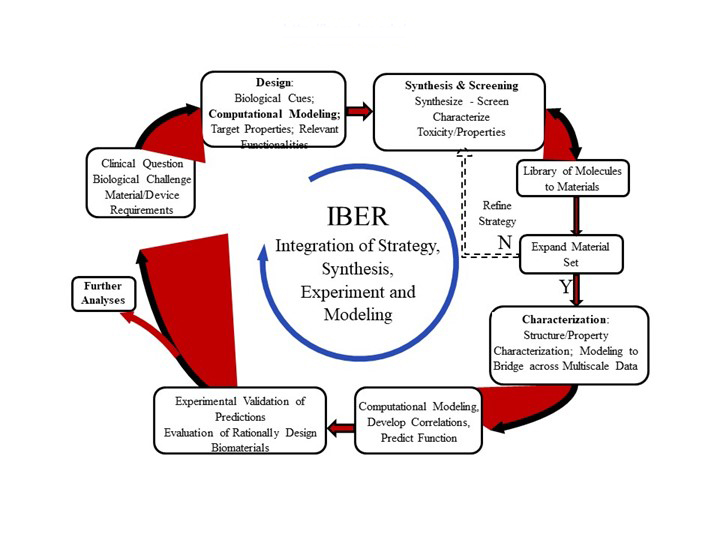Computational Models to Support New Biomaterials Development
Realizing the promise of biomaterials in contexts such as sophisticated drug-delivery systems; and joint, tissue, and organ repair will require rigorous, simultaneous analysis of the complexity on both the biomaterial and organismal sides of the material-biological system interface. In living systems, interfaces are dynamic, and to seamlessly scale across them both temporally and spatially demands a mix of experimental and computational approaches. Translating this information to the development of advanced biomaterials requires both diverse expertise and iterative refinement to guide the optimization process. We address these challenges by integrating expertise and capabilities in biology, materials engineering, and computational modeling.
The development of new biomaterials can be a time- and resource-demanding process. To address these limitations, we utilize an iterative feedback loop in which computational modeling is incorporating with the synthesis and analytical characterization (Figure 1). The modeling affords the advantage that parameters that cannot be easily modified in the laboratory may be varied in the models, and the models may be exercised for a variety of conditions. Computational models to correlate system parameters with material properties have the potential to support in silico parameter optimization.
